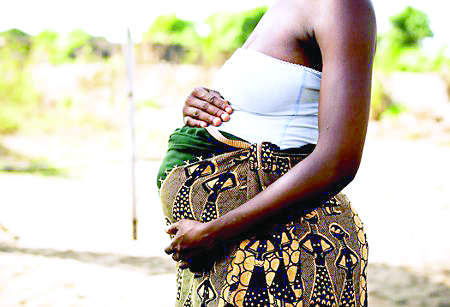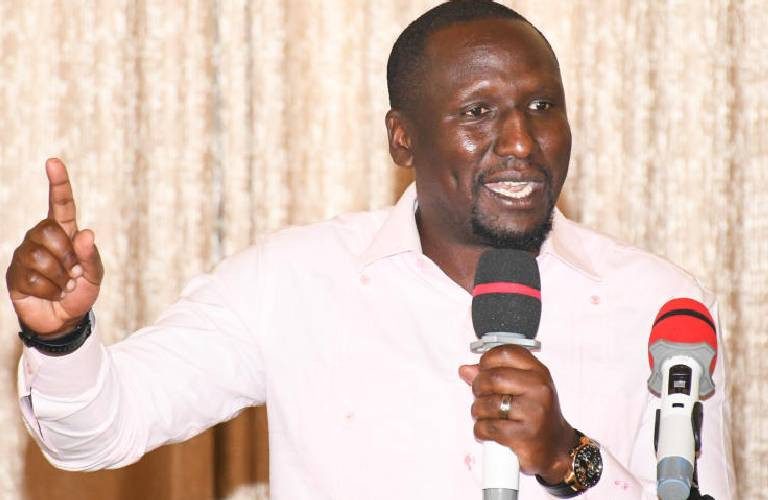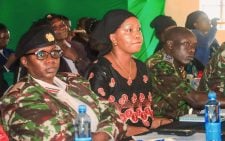Rise in teenage pregnancies causes alarm in Nyandarua

Over 6,000 teenage girls have fallen pregnant in Nyandarua in the last three years, according to data collected from health facilities across the county.
The data, released during a one-day stakeholders’ meeting held in a hotel in Ol Kalou, revealed that out of the 2,033 teenage pregnancies recorded in the county last year alone, Kinangop had 764, Kipipiri 287, Ndaragwa 273, Ol Kalou 429 and Ol joroorok 280 pregnancies.
“These figures are only for those girls who visited health facilities in the county. The figure might be higher considering there those who did not visit hospitals and so their data is not captured,” said Samuel Maina, an official in the county’s health department.
He revealed that the report was compiled from data collected from public hospitals in the five sub counties.
The county HIV coordinator Stephen Mwangi disclosed that an average of 25 girls aged between 10-14 years get pregnant each year in the county.
“In 2020, 25 girls in that age category got pregnant, the figure rose to 27 in the following year and last year it stood at 30 girls,” Mwangi said.
But the trend of teenage pregnancy is worryingly much higher in the 15-19 year age group, where 2,281 girls got pregnant in 2020 in Nyandarua county. In 2021, the figure rose to 2,470 girls but last year the figure dropped to 2033 girls, Mwangi said.
The coordinator said the pregnancies were largely as a result of failure to use condoms by sexually active groups in the county thus exposing themselves to risks of contracting HIV and other sexually transmitted infections.
“Last year, a 13-year-old girl delivered, that is a child giving birth to another child. So, when midwives are giving instructions on how to breastfeed the new born, they don’t direct it to the girl but to the delivered child’s grandmother,” Maina said.
Maina urged for youth-friendly points to be established in public hospitals where the teenagers who are sexually active can access condoms as one way of reducing the pregnancies.
He said some workers at public hospitals are also residents of their locality. This he said keeps the youths away from visiting the facilities for the condoms.
“No youth would want to be seen carrying a packet of condoms when they know the worker at the hospital is a friend to his or her mother and is likely to reveal about the mission,” Maina said.
Pool efforts
Nyandarua Central Deputy County Commissioner, Peter Kimani said there is need for stakeholders to pool efforts to curb the problem.
The meeting was organised by Forum for African Women Educationists (FAWE) Kenya Chapter to launch its activities in the county.
The activities will include interventions, such as peer clubs in schools to create awareness, to stem teenage pregnancies and child marriages, according to FAWE Nyandarua Coordinator, Anthony Mwakwasha.
But the biggest challenge to take the vice head-on will be how to break the community taboo where sexuality is not talked about openly.
Church and Muslim leaders who were present at the meeting could not give a direction on how to tame the problem. They pitched for the religious route instead of parents being asked to talk about sex with their daughters.
The County Director of Quality Assurance Standards, Samuel Ngugi, who wondered why the problem was rampant in Kinangop area, urged for well thought out interventions that will not propagate stigma against the girls who are victims of child pregnancies.
The high number of the pregnant girls recorded in Kinangop is attributed to the region being the most populous among the five constituencies of the county.
But Cecilia Wambui warned that the problem will persist unless economy improves. “If the economic hardships continue to be felt by residents, we should expect more children to drop out of school and with that more teenage girls who will be out of school will be at risk of getting pregnant since they will be idling at home,” Wambui warned.
School calendar
She pointed out that the wave started with the interruption of school calendar by Covid-19 when the children remained away from school for close to one year.
The meeting was almost unanimous that the girls should be helped to resume schooling after delivery but they could not agree if it will be proper for them to be allowed to form “mothers’ clubs” at the schools for peer support.
FAWE indicated that one school will be identified where some of the interventions will be piloted.









